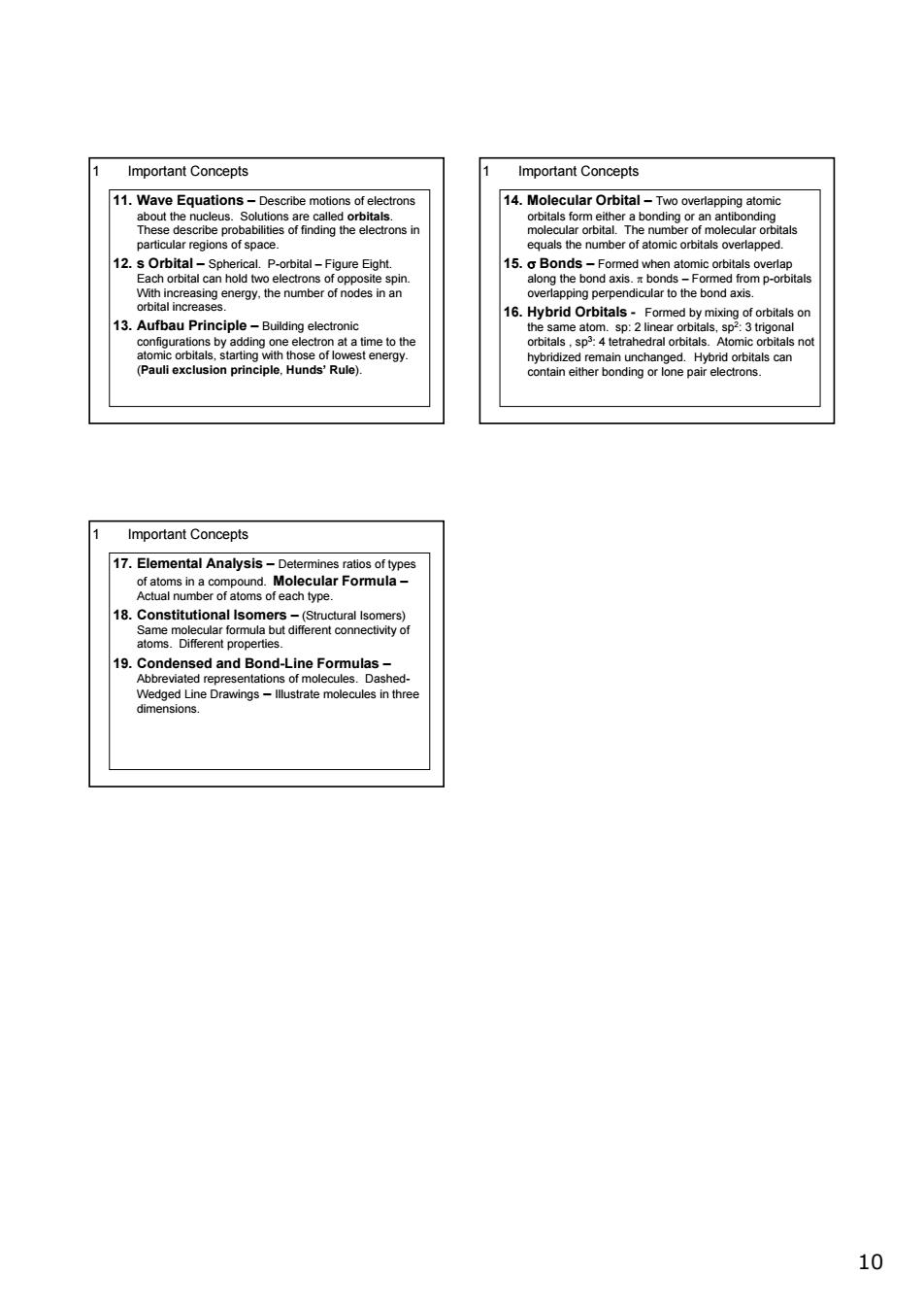正在加载图片...

1 Important Concepts Important Concepts 14.Molecular Orbital-Two al Figure Eight. hncreasincenerg dding one 1 Important Concepts 17. Determin b ndonsod and Bo 1010 1 Important Concepts 11. Wave Equations – Describe motions of electrons about the nucleus. Solutions are called orbitals. These describe probabilities of finding the electrons in particular regions of space. 12. s Orbital – Spherical. P-orbital – Figure Eight. Each orbital can hold two electrons of opposite spin. With increasing energy, the number of nodes in an orbital increases. 13. Aufbau Principle – Building electronic configurations by adding one electron at a time to the atomic orbitals, starting with those of lowest energy. (Pauli exclusion principle, Hunds’ Rule). 1 Important Concepts 14. Molecular Orbital – Two overlapping atomic orbitals form either a bonding or an antibonding molecular orbital. The number of molecular orbitals equals the number of atomic orbitals overlapped. 15. σ Bonds – Formed when atomic orbitals overlap along the bond axis. π bonds – Formed from p-orbitals overlapping perpendicular to the bond axis. 16. Hybrid Orbitals - Formed by mixing of orbitals on the same atom. sp: 2 linear orbitals, sp2: 3 trigonal orbitals , sp3: 4 tetrahedral orbitals. Atomic orbitals not hybridized remain unchanged. Hybrid orbitals can contain either bonding or lone pair electrons. 1 Important Concepts 17. Elemental Analysis – Determines ratios of types of atoms in a compound. Molecular Formula – Actual number of atoms of each type. 18. Constitutional Isomers – (Structural Isomers) Same molecular formula but different connectivity of atoms. Different properties. 19. Condensed and Bond-Line Formulas – Abbreviated representations of molecules. DashedWedged Line Drawings – Illustrate molecules in three dimensions